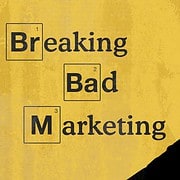We understand the terms and products relating to running your own website may be new to many of you. In this section, we will attempt to explain what all of this means in order to assist you in determining which products you need. If, after reading the information contained here you still aren’t sure, you may email us and we will offer recommendations.
Domains
A domain represents the unique name assigned to an organization or individual on the Internet. For instance, we are all familiar with names such as google.com, microsoft.com, and so on. A particular name (domain) may only be owned by one person or company. To use an analogy, a domain represents your “street address” where you live on the Internet. A domain is the “home” address where a particular website resides.
The domain name is comprised of several parts. The last part of the domain (.com for instance), is referred to as the top-level domain (TLD). In theory, the TLD represents a type of entity: for instance, .com stands for “commercial”. It was originally meant to be for commercial enterprises (business), but has become something of a misnomer as even people with personal websites use the .com TLD.
Other popular TLDs include:
- .net – originally meant to signify Network orgainzations such as Internet Service Providers (ISP)
- .edu – Education establishments (colleges/universities)
- .mil – Military
- .org – Non-profit organizations
- .gov – Government organizations
- .biz – a business
- .name – individual/person
- .info – information service There are others as well such as .aero, .pro, .coop, and so on. In addition, there are TLDs assigned to countries (e.g., .ca for Canada).
If you plan to have a website on the Internet, you will need a domain name for that site. If the name you want is already taken, you will have to find a different one. For example, if you wanted the domain CandlesForSale.com, that is already taken. However, the name CandlesForSale.biz is (currently) available. You could select the .biz name, or try to find an alternate such as Candles4sale.com (which is also currently taken).
There are literally millions of domains already taken so you may have to be creative in finding the name you want. But if you plan to put your own site on the web, you will need to identify an available domain. Once you do so, you should register that name immediately as it may not be available the next day.
When you go to our Domain Name purchase page, you will find a feature that lets you look up a name to determine whether or not it is available. It can be frustrating so be patient.
Hosting Plans
In order to make your website available it must be located on a “hosting server”. The type of hosting service you need depends on a number of factors:
- the number of pages you plan to have
- if you will have large files such as databases or numerous graphics or pictures
- the number of visitors you expect each month
- whether you plan to use your site to sell products
- whether you plan to design the site yourself, or have someone do it for you
- whether you plan to use scripting languages such as PHP or ASP
- what type of database support you require (if any)
- whether you have a preference for a Windows or Linux server
All of the plans offered by TurkReno include a significant amount of Hard Drive space, more than most people will ever need. This is the space on the hosting server reserved for your content (HTML, graphics, pictures, databases, etc.). Even the lowest priced plan provides for significant storage space. In most cases, this is more than enough for a personal website, even if you plan to include a large number of pictures. For instance, if you plan to post photographs with an average size of 100k, 5GB of space would allow you to store nearly 500,000 photos!
Database files (MS-Access, MySQL, etc) are typically very large. However, even if you plan to offer several applications using MS-Access or MySql databases, 5GB would ordinarily provide more than enough space. Also keep in mind, if you find that you require more space than you anticipated, you can also upgrade your hosting plan at a later date.
The amount of “bandwidth” you may require on a monthly basis is also a factor in deciding which hosting plan you need. You can think of bandwidth (or information sent out from the server) as a water pipe. The more water you need to put through that pipe during a given timeframe, the larger the pipe you need.
For instance, let’s say the total size of your site content (text and graphics) is 1 Megabyte (1 Mb). If you expect 1,000 visitors to your site each month, and assumming each visitor viewed every single page on your site (a BIG if), your bandwidth requirement would be 1 Gb per month. On the other hand, if the total size of your site was 10Mb, you would require 10Gb bandwidth for those same 1,000 visitors. In short, your bandwidth requirements will be determined by the total size of your site, along with the total number of monthly visitors.
If you plan to develop applications that run on your site (e.g., database access, games, etc.) you will need a hosting plan that supports the particular programming language those applications are written in. These would include PHP, ASP, and others. It doesn’t matter if you code these applications yourself, have someone else code them for you, or purchase/download the application from another site (and there are quite a few free applications available for download), the hosting service will need to support the language the application was written in for it to work on your site.
All of the hosting plans offered by TurkReno Incorporated already provide free forums, blogs, and other common applications so you may not need to add any additional ones. If you do, we offer plans that include PHP, Perl, ASP, ASP.Net, and Java. We can also provide other prepackaged applications such as shopping carts.
If you plan to run one or more applications on your site that require database access, you will need to make sure the hosting service you use supports that database. Depending on the hosting plan, we offer support for MS Access, MySQL and SQL Server 2012.
If you plan to sell products from your website, or if you will be taking personal information, you need a SSL (Secure Sockets Layer) Certificate. The SSL has two major functions. First, it let’s the people who visit your site know that you are in fact who you say you are (by verifying your certificate). Second, it encrypts (or scrambles) any personal or sensitive information (such as credit card numbers) before that information is transmitted over the Internet. If you have ever shopped at eBay, Amazon or other such sites, you have probably noticed the “key” or “lock” that shows up in your taskbar. This tells you that you are on a secure connection. That secure connection is a result of your SSL Certificate.
Another consideration when trying to decide what hosting plan you need is the number of email accounts you require. For a personal site, you may require very few email accounts, if any. The 500 accounts that come with the smaller plan should be more than enough for your family and friends.
If you plan to use your website to run a business, you may require more email accounts. If that is the case you can either purchase one of the other plans, or you can simply purchase additional email accounts for a small annual fee. In any case, your email accounts will allow you to have an email address with your domain name (e.g., turkreno@mydomain.com). The email accounts we provide are web-based so you can access them anywhere you have Internet access. As with the other items, you need to think through how you plan to use your site.
We also offer both Virtual Dedicated Servers and Dedicated Servers. Both of these give you full control of the server (as if it were located in your home or business site). Dedicated Servers are usually required by larger business or those wanting to provide hosting to other people. If you need additional information on our Dedicated Server plans, you can check out the plans in our “product store”, or email us at the link below.
Shopping Cart and Merchant Account
For those of you who plan to use your site to sell products, you will need both a shopping cart and a merchant account (if you don’t have one already).
The shopping cart allows you to build an online “store front” and product catalog similar to what you see at Amazon.com and other sites. We offer an inexpensive application called QuickCart that should fit your needs.
The Merchant Account gives you the ability to accept credit card payments online (through a shopping cart or other means). If you are already running your own “bricks and mortar” business you probably already have a merchant account. If that is the case, you will need to check with them regarding the ability to take online payments. If you don’t currently have an account, or you are just starting your business, you may want to check the Merchant Account we offer.
Search Engine Optimization
There are literally millions of businesses online. In order to compete with these, you will most likely want to ensure that you are placed in “Search Engine” results with the highest ranking possible. One of our products, Search Engine Visibility, will do that for you. It will evaluate your site and make suggestions to give you the best search engine rankings possible. You can also use Search Engine Visibility to submit your site to Google, Yahoo and dozens of other search engines, as well as web directories. One of the really great features in Traffic Blazer is an Search Engine Visibility tool that will tell you if there is a problem with your site that would prevent it from being listed in the search engines. For instance, many of the search engines will not list sites that have internal “broken links”. Search Engine Visibility will notify you regarding issues such as that.
Google AdWords
AdWords is a Pay-Per-Click (PPC) advertising feature that will allow your site to be listed in the Google “Sponsored Sites” area of their search engine results pages. If you aren’t sure what this is, just go to google and search for “candles” or some other item. You will see the sponsored ads on the right. These can be highly effective depending on your type of business.
Placement of AdWords links are based on how much you “bid” for each click. That is, if you bid 35 cents for each click you will get a higher placement than if you bid 25 cents. The amount for each bid is deducted from your total credits only when someone clicks on the link to go to your site.
Closing
If you still aren’t sure what you need for your particular site, please feel free to contact our support staff.









